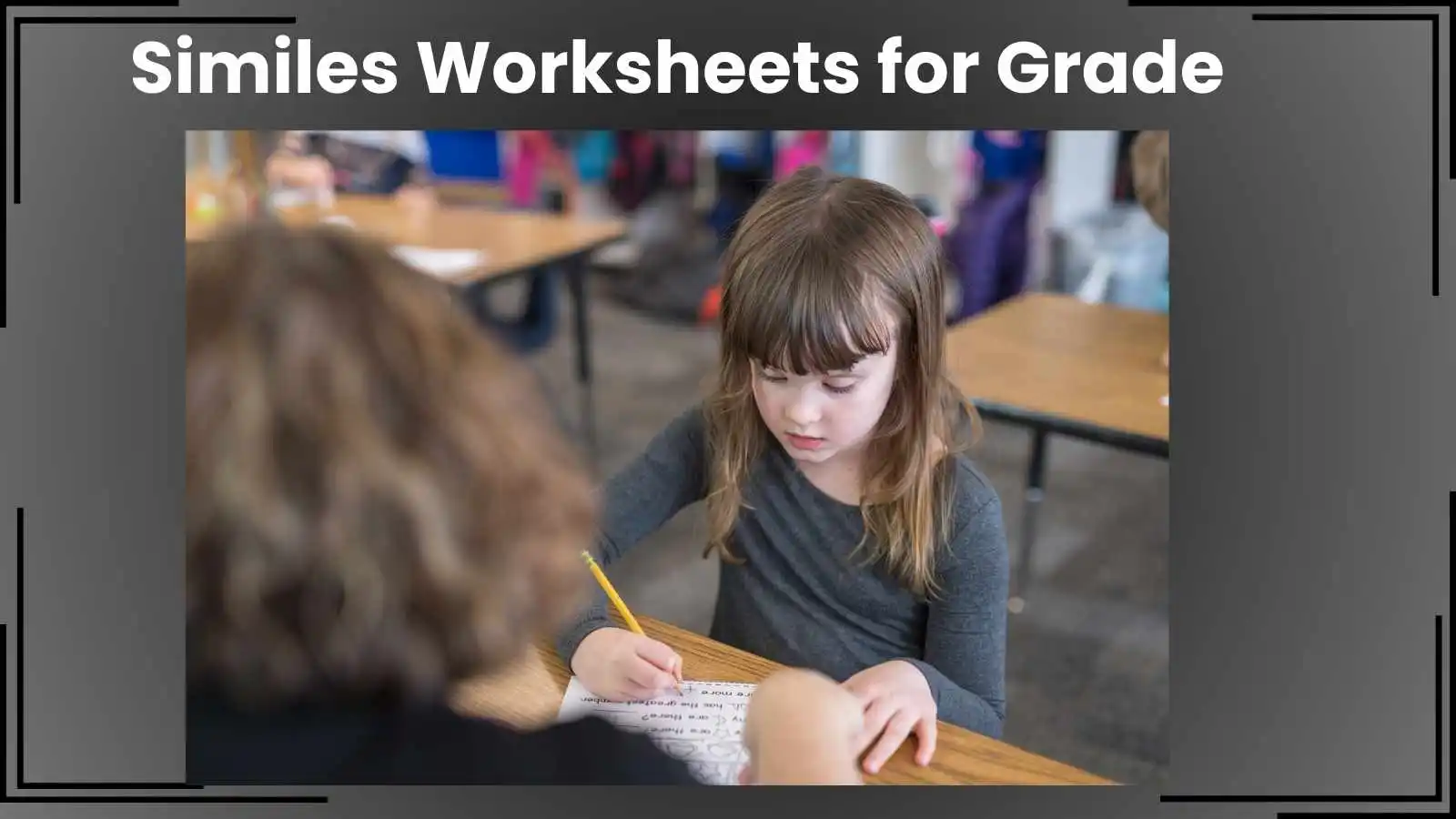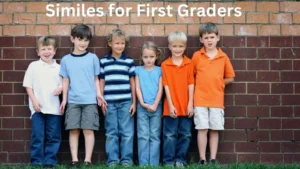Similes are one of the building blocks of language that help students improve their writing and communication skills.
They are expressions that compare two things using the words “like” or “as” to create vivid, relatable imagery.
For 4th-grade students, learning similes can be a fun and engaging way to boost creativity while understanding language nuances.
In this article, we’ll explore 20+ worksheets designed specifically for 4th-grade students to help them understand, identify, and use similes effectively.
Whether you’re a teacher, parent, or student, this resource will provide valuable tools to enhance your language skills.
What Are Similes and Why Are They Important?
Before diving into worksheets, let’s first define what similes are and why they’re an essential part of language learning. A simile is a figure of speech that compares two different things by highlighting their similarities. It typically uses the words “like” or “as” to make this comparison. For example:
- “Her smile was as bright as the sun.”
- “He was as brave as a lion.”
These comparisons help make language more descriptive, helping readers or listeners visualize the concept more clearly. Similes are useful in both creative writing and everyday speech, making them an important skill for students to develop at a young age.
Benefits of Learning Similes in Grade 4
Grade 4 is a pivotal year in a child’s educational journey. It’s when they transition from basic grammar concepts to more advanced writing and language techniques. Learning similes at this stage can have numerous benefits:
- Enhanced Creativity: Similes encourage students to think outside the box and use descriptive language, which enhances their creative writing skills.
- Improved Reading Comprehension: Recognizing similes in literature helps students understand the deeper meaning behind texts.
- Stronger Writing Skills: Using similes effectively adds flair and clarity to writing, making it more engaging and easier to understand.
- Increased Vocabulary: Students are exposed to a variety of words and phrases that can be used in similes, thus expanding their vocabulary.
20+ Similes Worksheets for Grade 4
To help students practice and master similes, we’ve created a collection of worksheets that focus on different aspects of simile usage. These worksheets can be used in the classroom or at home, either as independent exercises or group activities.
Worksheet 1: Identify the Simile
In this worksheet, students will read short passages and identify the similes used. They’ll underline or highlight the similes and explain what two things are being compared.
Example:
- “Her laughter was as loud as a thunderstorm.”
Answer: The simile compares “her laughter” to “a thunderstorm” using “as loud as.”
Worksheet 2: Create Your Own Similes
This worksheet encourages students to create their own similes based on different prompts. For instance, they might be asked to describe an animal, a person, or an object using a simile.
Example Prompt:
- Describe a cat using a simile.
Answer: “The cat was as sleek as a shadow.”
Worksheet 3: Match the Simile
This worksheet asks students to match a set of similes with their meanings. This helps them understand the context in which each simile can be used.
Example:
- Simile: “As busy as a bee”
- Meaning: Always working hard or constantly moving.
Worksheet 4: Fill in the Blanks with the Right Simile
In this worksheet, students will complete sentences by filling in the blanks with the appropriate simile from a given list.
Example:
- “She danced __________.” (Possible answers: like a butterfly, like a tornado, like a queen)
Worksheet 5: Simile or Not?
This worksheet challenges students to differentiate between similes and other types of figurative language, such as metaphors.
Worksheet 6: Find the Simile in a Story
Students will read a short story and identify the similes within the text. Afterward, they’ll discuss how the similes enhance the story.
Worksheet 7: Simile Sentence Expansion
Students will take simple sentences and expand them by adding similes to make them more descriptive.
Example:
- Simple sentence: “The dog barked.”
- Expanded: “The dog barked loudly, like a lion protecting its territory.”
Worksheet 8: Create a Simile Story
Students will write a short story incorporating at least five similes. This exercise allows them to practice creativity and develop their simile usage.
Worksheet 9: Similes in Songs
This worksheet involves finding and analyzing similes in popular songs. Students will reflect on how similes make the song lyrics more interesting and meaningful.
Worksheet 10: Visual Similes
This worksheet asks students to create a simile based on a picture. Visual prompts can help them come up with creative comparisons based on what they see.
Worksheet 11: Review Similes from Literature
Using examples from classic literature or short poems, students will identify similes and discuss their significance within the text.
Alternatives to “Similes Worksheets for Grade 4”
While “similes worksheets for grade 4” is a direct and clear phrase, there are several polite, professional, and casual alternatives you can use, depending on the context and tone you want to convey.
Polite Alternatives:
- Simile Practice Exercises for Grade 4
- Similes Learning Sheets for 4th Grade
- Simile Comprehension Worksheets for Elementary Students
- 4th Grade Simile Enhancement Activities
- Simile Skills Development Sheets for Grade 4
Professional Alternatives:
- Simile Application Worksheets for Grade 4 Students
- Educational Simile Worksheets for Grade 4
- Similes Understanding Worksheets for 4th Grade
- Grade 4 Simile Mastery Exercises
- Simile Skill-Building Worksheets for Fourth Grade
Casual Alternatives:
- Fun Similes Worksheets for 4th Graders
- Grade 4 Simile Fun Sheets
- Simile Activities for 4th Grade Students
- Creative Similes Practice for Grade 4
- Simile Fun Worksheets for Kids in Grade 4
11 Texting Examples for Users
Here are 11 texting examples that are user-friendly and optimized for SEO. They can help teachers, parents, or students communicate effectively about similes.
- “Hey, do you have any simile worksheets for 4th graders?”
- “Check out these fun simile practice worksheets for grade 4!”
- “Looking for some easy similes worksheets? Here’s one for grade 4.”
- “Can you help me with a simile exercise for my 4th-grade class?”
- “I found some great simile worksheets for 4th graders online!”
- “Do you need some fun simile worksheets for your 4th-grade students?”
- “Let’s do a simile exercise for the 4th grade today!”
- “Got some cool simile activities for grade 4! Want me to send them?”
- “Do you have any simile worksheets for my 4th grader?”
- “Here’s a fun way for grade 4 to practice similes. Check this out!”
- “Just finished a simile worksheet for my 4th-grade class. It’s awesome!”
Conclusion
Similes are an important aspect of language learning, especially for 4th graders who are beginning to explore more advanced writing techniques. By incorporating similes into everyday communication and writing, students can enhance their creativity and improve their descriptive skills. The worksheets provided in this article offer a variety of activities to help students understand and use similes in different contexts. Whether you are a teacher, parent, or student, these exercises will help develop a strong foundation in figurative language that can be built upon in later grades.





